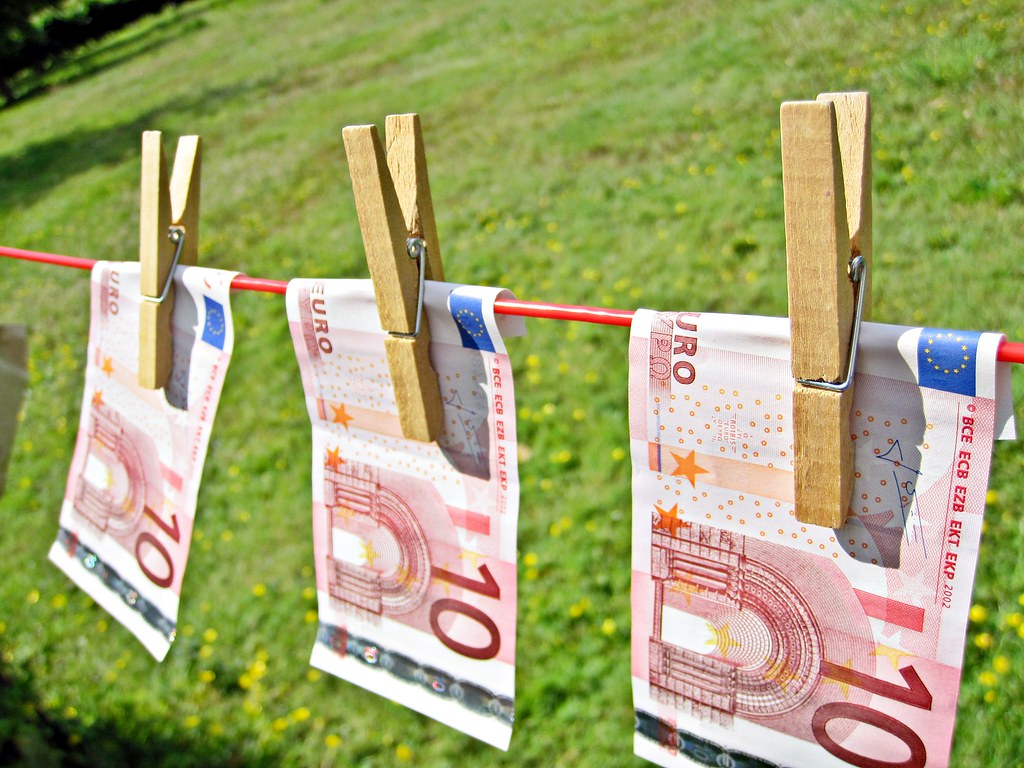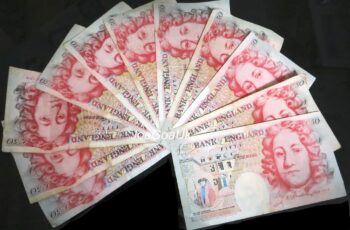
“Money Laundering – Euros” by Images_of_Money is licensed under CC BY 2.0.
Money laundering is a process used by criminals to disguise the origins of illegally obtained money, making it appear as though it comes from legitimate sources. This practice is crucial for criminals because it allows them to enjoy the profits of their illegal activities without attracting the attention of law enforcement. Let’s break down what money laundering is, why people do it, and how it works step by step.
What is Money Laundering?
In simple terms, money laundering is the process of making “dirty” money (money obtained through illegal activities) look “clean” (legitimate). This is done by moving the money through a complex sequence of banking transfers or commercial transactions. The goal is to make it difficult to trace the money back to its illegal origins.
Why Do People Engage in Money Laundering?
People engage in money laundering for several reasons:
- To Enjoy Illegal Profits: Criminals want to use their illegally obtained money without raising suspicion. By laundering money, they can spend it on luxury items, invest in businesses, or save it in banks without attracting attention.
- To Avoid Detection: Laundering money helps criminals avoid detection by law enforcement agencies. If the money appears to come from a legitimate source, it is less likely to be investigated.
- To Fund Further Criminal Activities: Laundered money can be used to finance further illegal activities, such as drug trafficking, terrorism, or human trafficking.
The Three Stages of Money Laundering
Money laundering typically involves three main stages: placement, layering, and integration. Each stage plays a crucial role in disguising the origins of the money.
1. Placement: Introducing the Money into the Financial System
The first step in money laundering is to introduce the illegal money into the financial system. This is known as placement. Criminals use various methods to do this:
- Smurfing: Breaking down large amounts of cash into smaller, less suspicious amounts and depositing them into bank accounts.
- Cash Businesses: Using businesses that deal with a lot of cash, such as restaurants or casinos, to mix illegal money with legitimate earnings.
- False Invoicing: Creating fake invoices for goods or services that were never provided, allowing the illegal money to be deposited as payment.
2. Layering: Obscuring the Money’s Origins
Once the money is in the financial system, the next step is layering. This involves moving the money around to create confusion and make it difficult to trace back to its illegal source. Techniques used in this stage include:
- Wire Transfers: Moving money between different accounts, often in different countries, to obscure its origins.
- Shell Companies: Using companies that exist only on paper to move money around without revealing the true owner.
- Investments: Buying and selling assets, such as real estate or stocks, to further obscure the money’s origins.
3. Integration: Making the Money Appear Legitimate
The final stage is integration, where the laundered money is reintroduced into the economy in a way that makes it appear legitimate. At this point, the money can be used freely without raising suspicion. Methods of integration include:
- Purchasing Luxury Items: Buying expensive items like cars, jewelry, or real estate.
- Investing in Businesses: Using the money to invest in legitimate businesses, which can then generate further legitimate income.
- Bank Accounts: Depositing the money into bank accounts as if it were legitimate earnings.
Who is Involved in Money Laundering?
Money laundering can involve a wide range of individuals and organizations, including:
- Criminal Organizations: Groups involved in drug trafficking, human trafficking, arms smuggling, and other illegal activities often engage in money laundering to manage their profits.
- Corrupt Officials: Government officials or politicians who receive bribes or engage in embezzlement may launder money to hide their illicit gains.
- Business Owners: Owners of legitimate businesses may participate in money laundering by mixing illegal money with their legitimate earnings.
- Professional Money Launderers: Some individuals specialize in laundering money for others, using their expertise to move and disguise large sums of money.
Conclusion
Money laundering is a complex process that allows criminals to enjoy the profits of their illegal activities without attracting attention. By understanding the stages of money laundering—placement, layering, and integration—we can better appreciate the challenges law enforcement faces in combating this crime. Efforts to prevent money laundering are crucial for maintaining the integrity of the financial system and ensuring that criminals cannot easily profit from their illegal activities.
Watch this video by TED Ed on how it all works.


